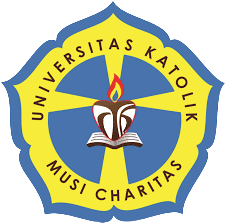Mengukur Kondisi Kesehatan Keuangan Perusahaan Sub- Industri Farmasi Saat Pandemi Covid-19
DOI:
https://doi.org/10.32524/kkjm.v2i3.1027Keywords:
financial health, financial distress, during Covid-19Abstract
This research is intended to obtain information regarding the financial health of companies in the pharmaceutical sub-industry (code F211) on the Indonesia Stock Exchange (BEI) during the period during the Covid-19 pandemic (2020-2022). To detect whether a company is experiencing financial health problems or its finances are experiencing pressure, a multiple discriminant analysis (MDA) model is used. There are 6 MDA models used, namely: Altman model, Fulmer model, Grover model, Springate model, Taffler model, and Zmijewski model. The type of research carried out includes exploratory descriptive research. The entire population was taken as a sample, namely 11 companies belonging to the pharmaceutical sub-industry (code F211). The research results show that the use of different models produces the same results, but some also produce different results. Generally, the results of analysis of a company experiencing very severe financial pressure using several models will produce the majority of the same results. Likewise, if an analysis is carried out on a company with a very healthy financial condition using several models it will produce the same results as the majority of the models used. The research results show that there are 4 companies that need to pay attention to their financial health, namely: PT Indofarma Tbk. (INAF), PT Kimia Farma Tbk. (KAEF), PT Phapros Tbk. (PEHA), and PT Pyridam Farma Tbk. (PYFA). There are 2 companies that are indicated to have very healthy financial conditions, namely: PT Kalbe Farma Tbk. (KLBF) and PT Industri Jamu and Pharmacy Sido Muncul Tbk. (SIDO).
Downloads
Published
How to Cite
Issue
Section
License
Copyright (c) 2023 Konsumen & Konsumsi: Jurnal Manajemen

This work is licensed under a Creative Commons Attribution-NonCommercial-NoDerivatives 4.0 International License.
















